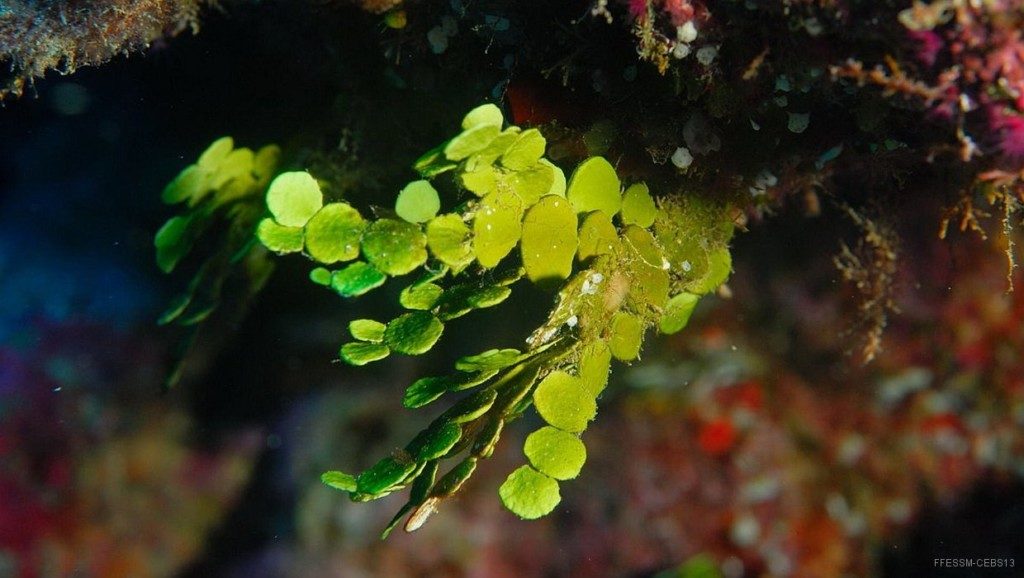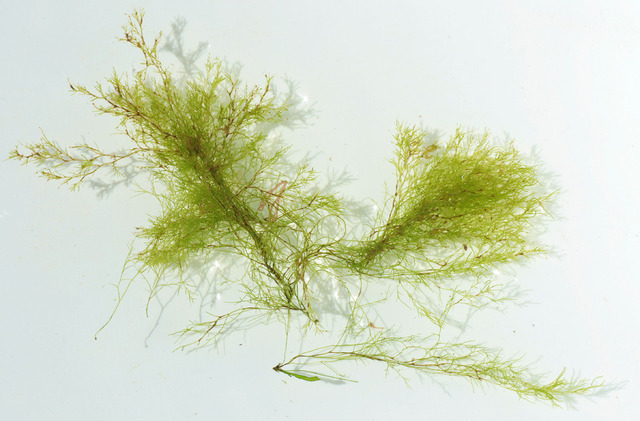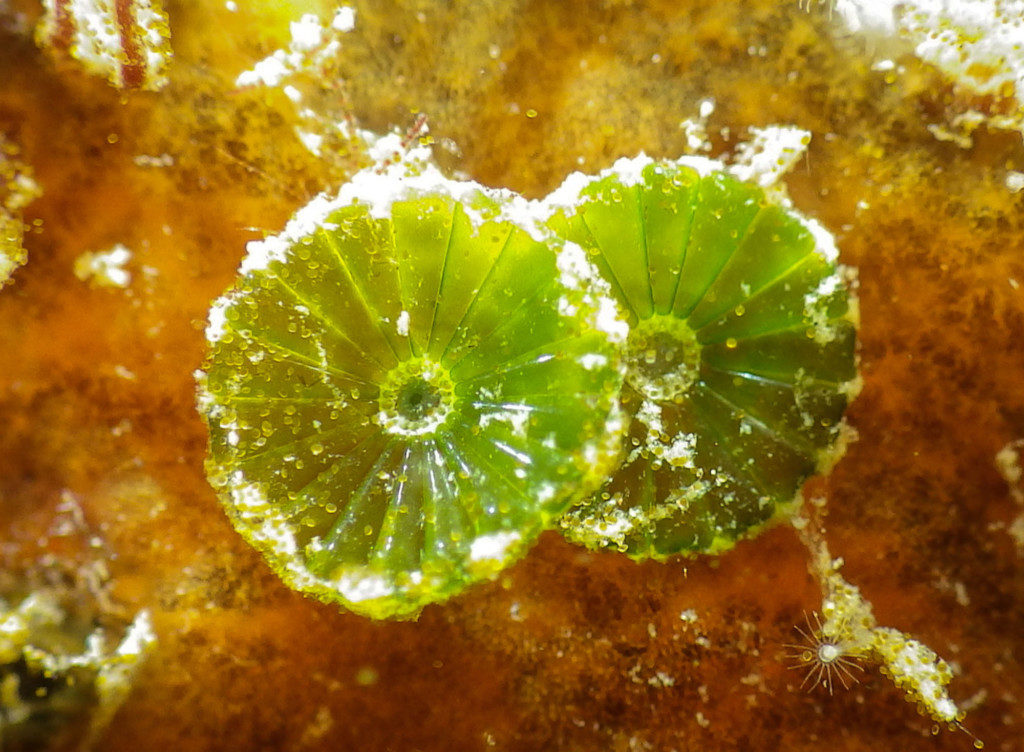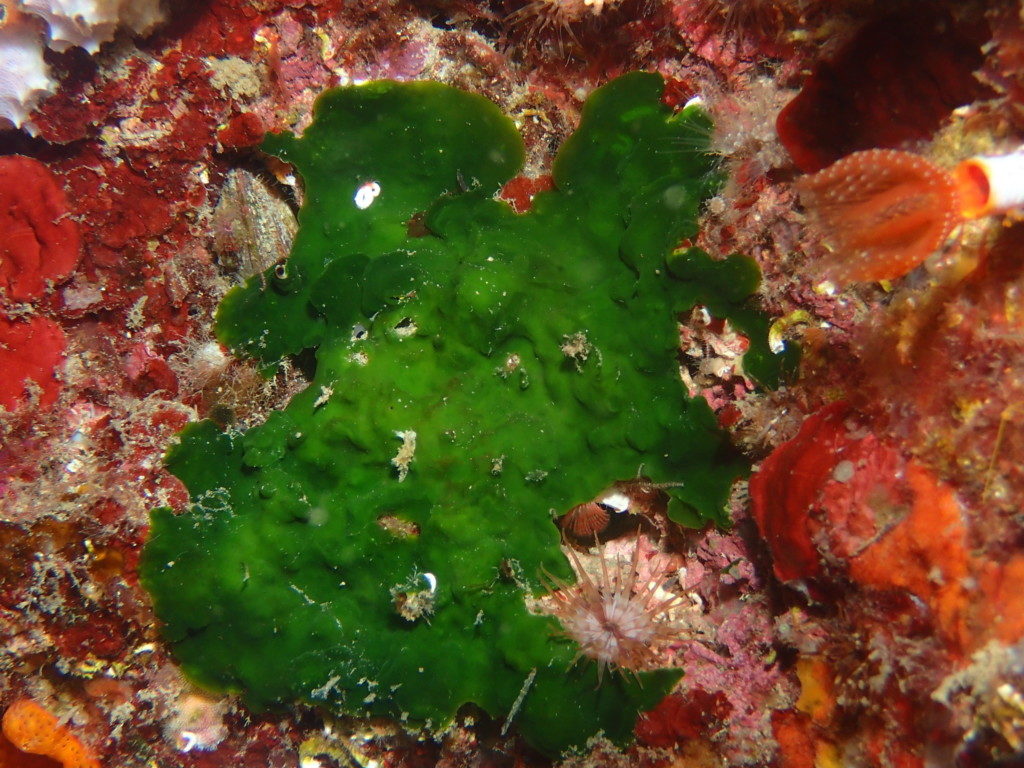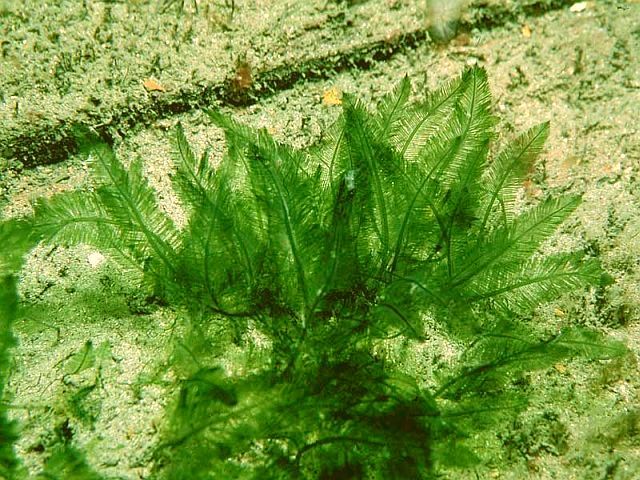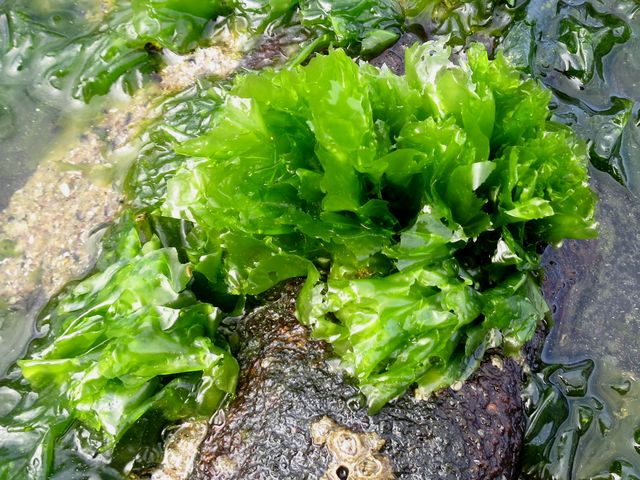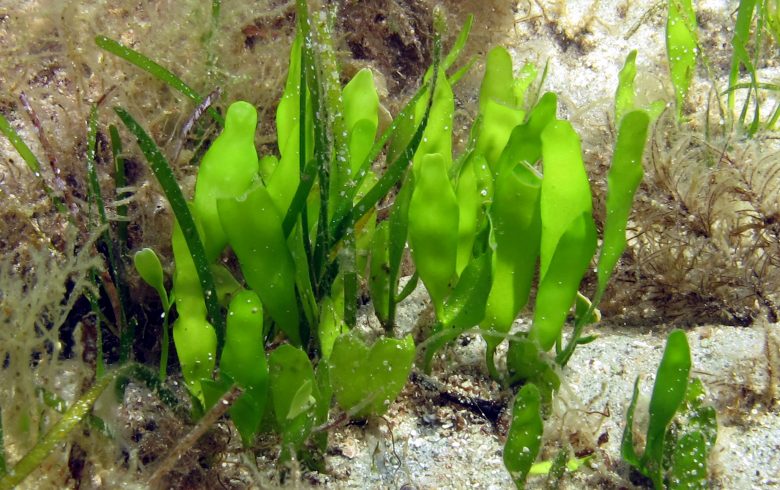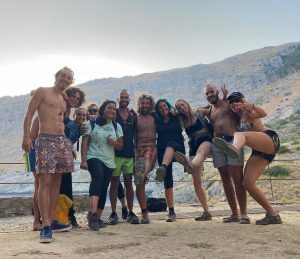Green Algae
The green algae are a large grouping of algae consisting of the Chlorophyta (4550 species) and Charophyta (3500 species), which are now placed in separate divisions. The green algae (Chlorophyta) include unicellular and colonial flagellates, as well as various colonial, coccoid and filamentous forms, and macroscopic, multicellular seaweeds.
Evolutionary, the youngest group of all 3 algae groups presented, counts about 8,000 species in total. Many species live most of their lives as single cells, while other species form coenobia (colonies), long filaments, or highly differentiated macroscopic seaweeds.
Chlorophyta group are mostly freshwater (3050 species), but also including marine species (1500). While Charophyta is “branching plant-like” strictly freshwater algae (3500 species). The fact that a lot of species are freshwater, is connecting them with recent vascular plants as their ancestors, because of their similar structure and physiology. They inhabit places with higher light distribution, but can also be found in the shadow.
These group of algae can be autotrophs (photosynthesis) but also heterotrophs (in the absence of light “hunting” bacteria). The tremendous diversity of this group is making them cosmopolitan. Founded in all the regions of the world, growing attached to the bottom or other hard surfaces as well in the sandy bottoms, usually, distribution in many cases is affected by the presence of freshwater or estuaries. They are providing food and shelter to many herbivores organisms like fish, crustaceans, worms and gastropods.
They are also have been used as food and material in various cultures for centuries. We have found 14 species in Ieranto that have a major role in the bay ecosystem
Halimeda tuna (Prickly pear; Calcareous Green Algae)
Description: It looks like a series of round articles joined together to make it take on a small prickly pear, while the individual segments suggest a small coin. It can be encrusted with limestone and is fixed to the substrate with thin rhizoids from which it branches in a single plane but almost always dichotomically, that is branching into two parts.
Ecology: This alga can be found in the midst of living rocks even with minimal dimensions, while it can reach 20 cm in height in nature and each segment can measure 20 mm in diameter. It is generally a marine seaweed that prefers little light. Common in the Mediterranean sea.
Fun fact: The colour is green or yellowish-green, but if it is strongly encrusted with limestone it can take on a whitish appearance. Entire alga is just one cell!
Flabelia petiolata (Sea Fan)
Description: A non-calcified thallus is made up of strands woven together to form a fan, the margins are rounded and wavy or frayed in larger specimens. The colour is green more or less dark. At the time of reproduction, the thallus is transformed into the elements of reproduction and then disappears.
Ecology: It is common in sandy environments or even between rocks from 0 to 60 m, but has been reported up to -120 m. It can be associated with brown algae of the genus Cystoseira. Present in infralittoral of the Mediterranean sea.
Fun fact: Alga has a smooth and velvet texture. Soo soft when you touch it!
Acetabularia acetabulum (Seas Umbrella)
Description: Umbrella shape of the calcified and radial thallus, supported by a single thin stem. The thallus is fixed by means of branched rhizoids. The colour varies from white to blue-green. The edge of the hat is not perfectly smooth; at the base of the disc, there are two rings of “hairs” called the upper crown and lower crown.
Ecology: Lives in shallow waters (4-5m) and in well-illuminated areas. Also on rocky bottoms and gravel, almost always in a little water, but it can go up to 30 meters depth as well. Throughout the Mediterranean, North Atlantic and the Canary Islands. In the rest of the world, there are twenty other species.
Fun fact: Entire alga is a single cell, in winter only the stem is visible and the umbrella then appears in spring. In the summer, spores form inside the disc are coming out due to the breaking of the disc
Cladophora prolifera (Cladophora)
Description: The species is rigid with a green-brown or deep green color. It is fixed to the substrate by long rhizoids, repeatedly branched. At maturity it forms thick bushes. The old cells of the basal region have a rhizoid with ring-shaped bottlenecks. Generally it reaches 10 cm in height, more rarely 20 cm.
Ecology: It is widespread on rocks and thalli of the species of the genus cystoseira in quiet places, little exposed and shaded; up to 20 m depth. Distribution in Mediterranean, Black Sea, Eastern Atlantic and Southern western Atlantic coasts. Also can find in Australia and Indonesia.
Fun fact: It proportionally absorbs a lot of iodine, copper, zinc, manganese and cobalt. Requires stable temperature.
Cladophora laetevirens (Spongy Cladophora)
Description: Thallus filamentous, branched, forming stiff, compact hemispherical pads to 5 cm high, or as sparse thalli to 20 cm high in protected areas. Pale green to grass green. Branching pseudodichotomous or pseudotrichotomous. Filaments straight to slightly curved. Rhizoids fine, form from basal or adjacent cells.
Ecology: Epilithic, grows near the line of low tide to 2 m deep, on hard substrates.. Widely distributed along tropical to warm-temperate Atlantic coasts of Europe, Mediterranean, West Africa and America. Potential to be invasive!
Fun fact: Cladophora mats are prolonging survival of E.coli and others enterococcal bacteria providing them food and shelter! Which means that overgrow of this alga can be dangerous for public and environmental health!
Parvocaulis parvulus (Daisy Green Seaweed)
Description: Tiny cap that is shaped like a daisy (about 0.5cm in diameter) made up of 34 petal-shaped ‘rays’, held up on a thin stalk. This tiny seaweed is calcified, in different degrees depending on the species. The young cap is green and turns white as it ages.
Ecology: This tiny seaweed is often overlooked. Annual, relatively common, epileptic, on the frontlines of the waves, especially on walls and ravines of the superficial infralittoral plane, up to 8m of depth. It grows on stones and coral rubble. Distribution in Mediterranean sea and warm waters all around the world.
Fun fact: They have siphonal structure, which means entire alga is only one cell!
Anadyomene stellata (Papyrus Print Algae)
Description: Dark green, growing in mats or tufts, 2–10 mm high and across, with 1–4 basal stipe cells attached by a cluster of slender rhizoids with occasional cross walls. Pedunculate thallus, erect, fan-shaped with wavy edges.
Ecology: It lives in shallow waters and prefers the Cystoseira as a substrate. Commonly found as a short mat in shaded intertidal areas, with larger plants subtidally. Widely distributed in the Mediterranean and tropical and sub-tropical coasts of the Americas and the Indo-Pacific.
Fun fact: Despite it’s beautiful appearance, alga protects itself with a coctail of compounds toxic to fish, including the partially eponymous stellaheptaenoic acid!
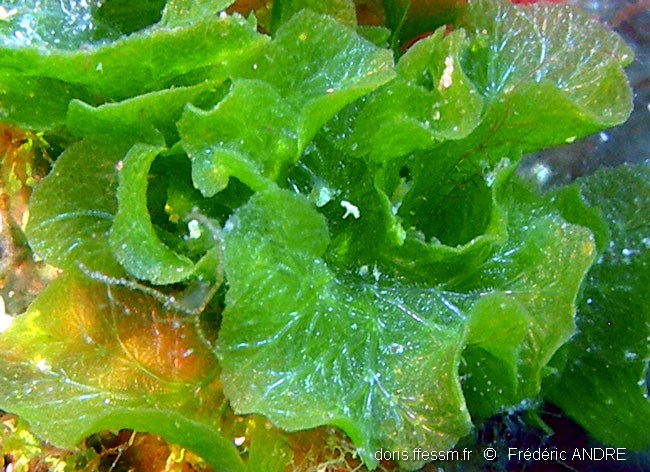
Palmophyllum crassum (Velvet Seaweed, Alga Velluto)
Description: Seaweed in the form of a non-calcified encrusting blade of intense luminous green color. It is partially (but very securely) attached to the substrate. Only margins, rounded and lobed, remain free in deep specimens, giving it an appearance of large green Peyssonnelia. It can reach 20 cm in diameter.
Ecology: Often found in epiphyte on encrusting calcareous algae of the order Corallinales, or on brown algae of the genus Cystoseira. Occurs in shaded biotopes from the surface up to 130 m depth. Present all year in the Mediterranean sea.
Fun fact: Species is composed of a cluster of spherical cells in a mucilaginous matrix.
Bryopsis plumosa (Hen Pen)
Description: Thallus broadly spreading, 2–15 (–25) cm high, green to dark green in color, with several to numerous axes arising from a branched, rhizoidal, basal system. Axes essentially distichously branched, less so below, with lower laterals elongating progressively towards the base and often themselves becoming pinnate, usually naked below (scars inconspicuous or slight).
Ecology: Usually epilithic, characteristic for low illuminated habitats, up to 25m in depth. Widespread in temperate waters throughout the world. Present in Mediterranean sea.
Fun fact: Studies shows that this alga assimilates radium from its environment!
Bryopsis mucosa (Mousse Bryopsis)
Description: Erect algae with a shiny dark green color, siphonate structure forming compact tufts. The axes are numerous and measure from 3 to 10 cm in length. They are cylindrical, rather rigid, the possible ramifications are dichotomous. Naked at their base, they cover themselves in the middle of their height. The thallus is attached to the substrate by branched rhizoids.
Ecology: Develops on rocks or is epiphyte on Lithophyllum byssoides corbels, in the lower mediolittoral in the front line of the waves. Visible in winter and spring, it disappears in summer. Distribution in Mediterranean sea and nearby Atlantic ocean.
Fun fact: They have siphoned structure which is comparable to a giant cell with a thin layer of cytoplasm, multinucleate, glued to the wall with a large vacuole
Bryopsis duplex (Double Bryopsis)
Description: Thales made up of simple erect cylindrical axes or very irregular branching, up to 10 cm high and dark green, lurid, have only a few lateral ramuli with limited growth, 1-2 mm long, distally arranged, which give to the together a slightly feathery appearance. Walls fixed to the substrate by branched rhizoids.
Ecology: Epilithic or epiphytic, relatively common species in the front line of the waves in the mediolateral and infralittoral zone. Present in winter and spring in the Mediterranean sea and oriental Atlantic.
Fun fact: This species is very tolerable toward pollution.
Ulva rigida (Sea Lettuce)
Description: Green to light leafy algae with a thick, rather rigid base attached by a small crampon to the rocks. Blades relatively thick in consistency cartilage, much like paper, slightly translucent, of 5 to 10 cm in diameter, rarely more, often with a wavy margin or embattled, visible with a magnifying glass.
Ecology: Lives in shallow waters, mediolittoral and infralittoral, with good lighting. Visible especially during periods of sunshine, late winter, spring and summer. Its life is quite short, a few weeks in general, but several generations succeed each other during the year. Cosmopolitan. Present in Mediterranean sea.
Fun fact: It has a high tolerance to pollution and anthropogenic inputs, hence its presence in ports, freshwater runoff areas, puddles.
Caulerpa prolifera (Caulerpa fogliosa)
Description: This siphoned alga has a weakly branched stolon that can measure up to 1 m long and from which: – down rhizoids, separated by a 1 to 2 cm that attach to the substrate and – upwards, separated from 1 to 5 cm, membranous lanceolate fronds, erect on a short peduncle (0.5 to 1.5 cm), with a stipe net and on edge always whole, up to 15 cm high (rounded edge) and 1.3 cm wide.
Ecology: Alga lives for several years, with a seasonal development: the fronds disappear, blanch but part of the stolon remains during the cold season and the seaweed grows again in the spring. On sandy or muddy furniture between 1 m and 20 m in depth. Common in tropical zones and Mediterranean sea.
Fun fact: Unlike C.taxifolia, C. prolifera is not considered an invasive species (apparently inhibited in the presence of healthy algal or herbarium mats). It is the oldest of the 6 species present in the Mediterranean!
Valonia aegagropila (Green Sea Vesicles)
Description: This algae has the shape of a spherical subset, not fixed, 2 to 8cm in diameter. It lives free on the bottom and can constitute dense populations. The siphoned thallus is composed of numerous vesicles called utricles, 1 to 6 cm long and 1 to 5 mm in diameter. These utricles, translucent and green in color , are slightly wider at the base than at the apex.
Ecology: Present in oligotrophic lagoon environments with marine affinities, between 0 and 7 meters deep, and in low hydrodynamic areas. It has poor support for low salinities (<20). On the other hand, the high salinities do not affect its development. Tropical and subtropical species – present in Mediterranean sea.
Fun fact: The tissues of some strains of this alga have a high antimicrobial capacity, with an antibacterial capacity superior to that of penicillin!
Conclusion: Green algae are really interesting organisms and have an important role in the marine ecosystems. They provide food and shelter to the marine organisms, have tremendous potential in the field of science, especially in chemistry and medicine. These group of algae is very important in environmental sciences, because a lot of species are known as bioindicators of polluted waters and by monitoring their populations, we can follow the health of the marine ecosystem as well as human health. Green algae are one of the colours of the bottom together with the red and brown algae. Check our other two small guides to have more clear picture of biodiversity that we have in Ieranto and why we are trying to protect it.
This research was made by the volunteers of Project M.A.R.E 2019.


